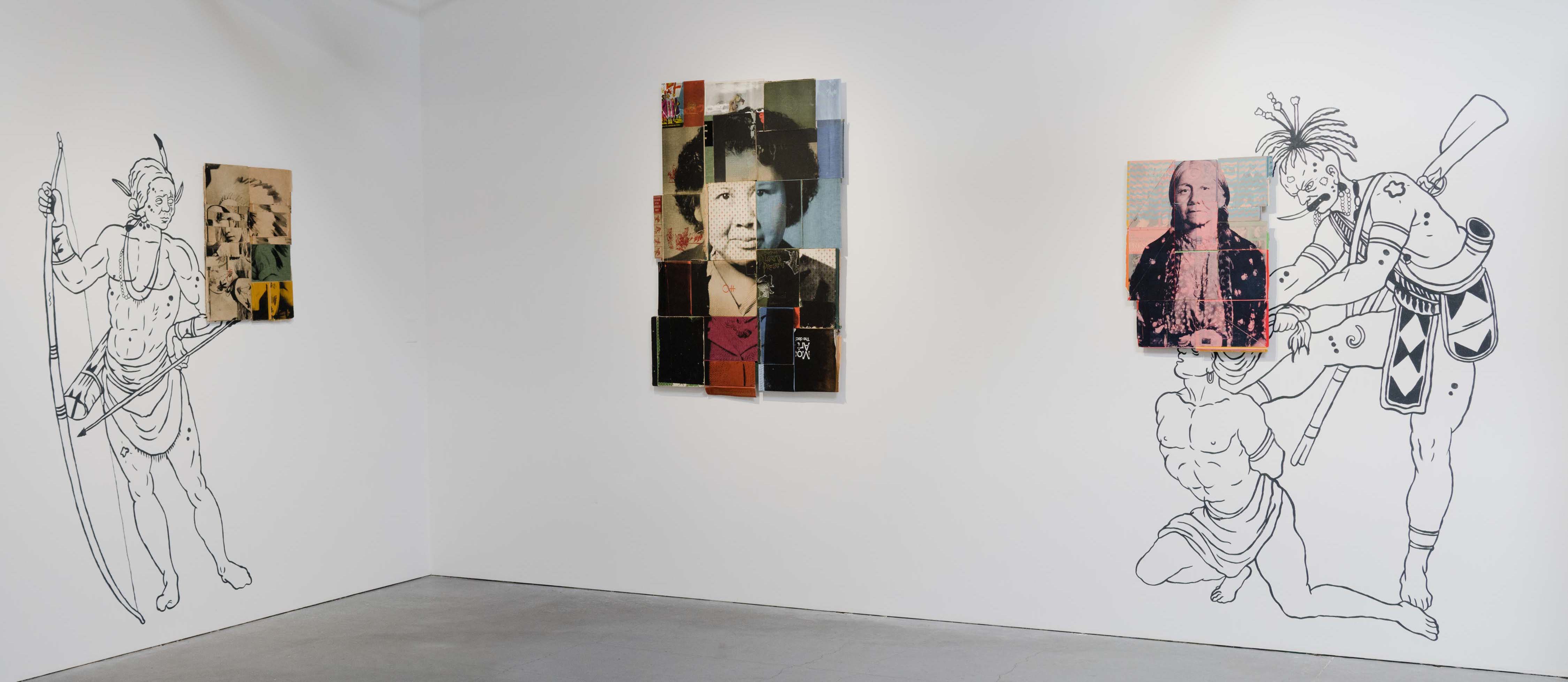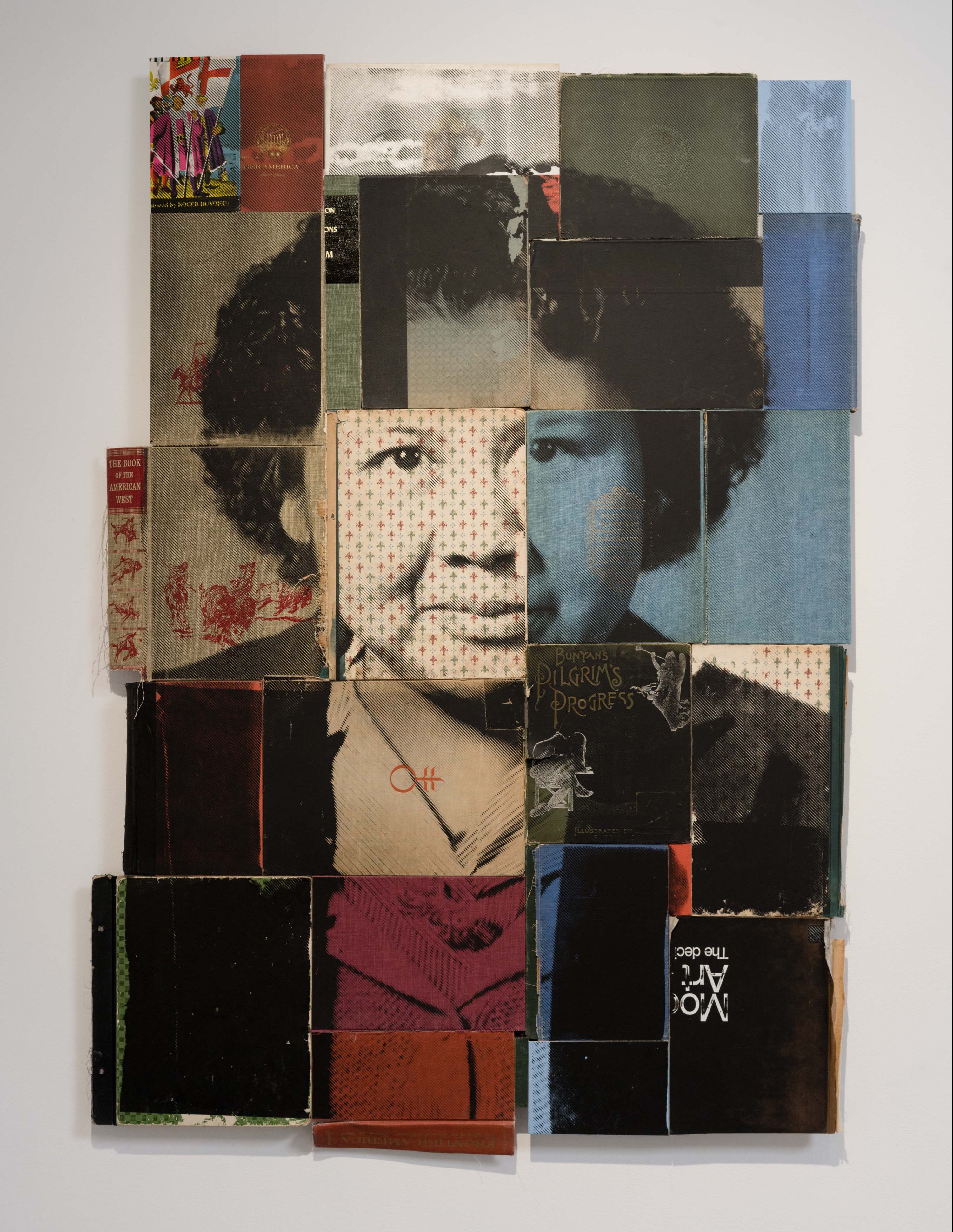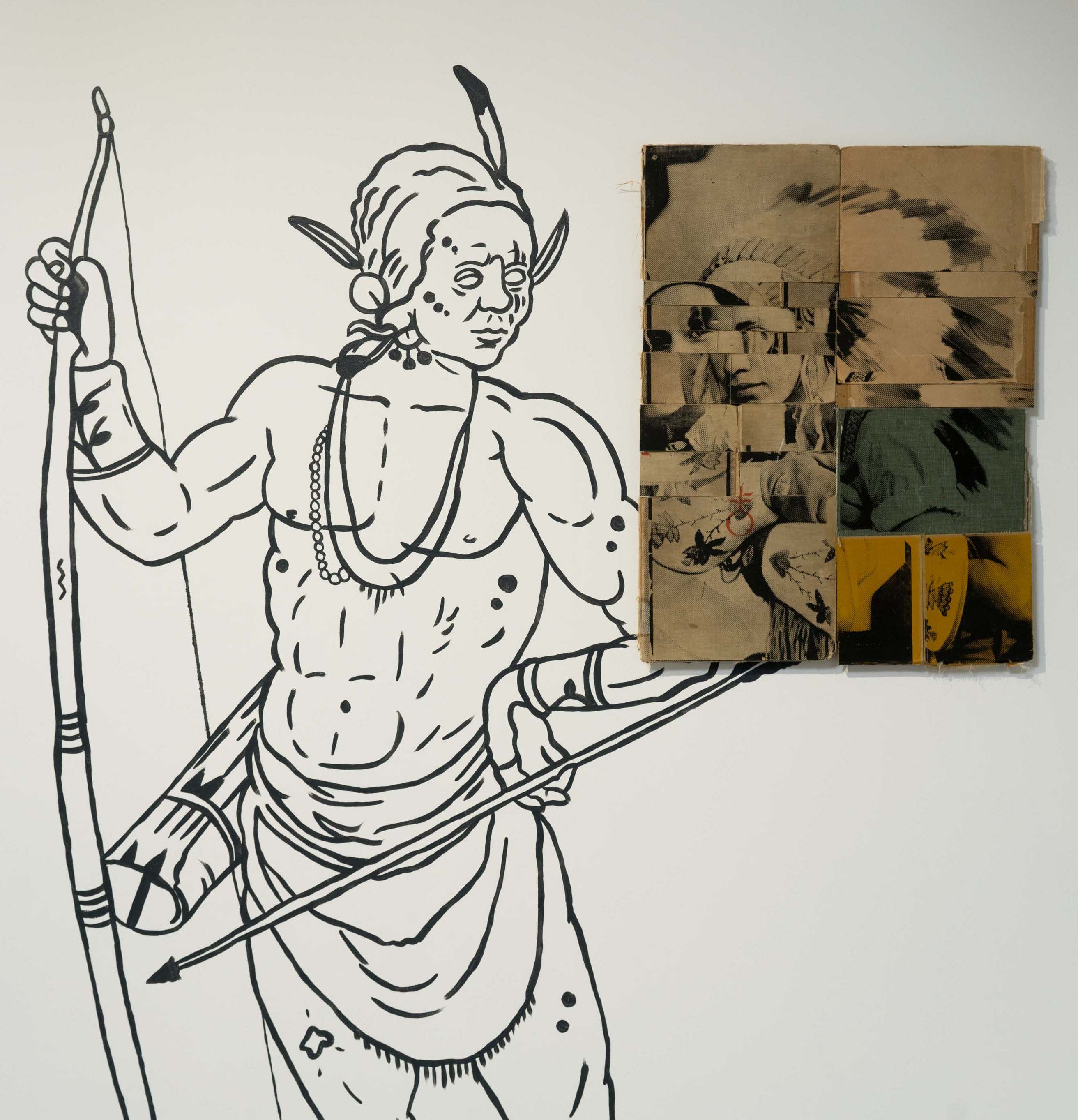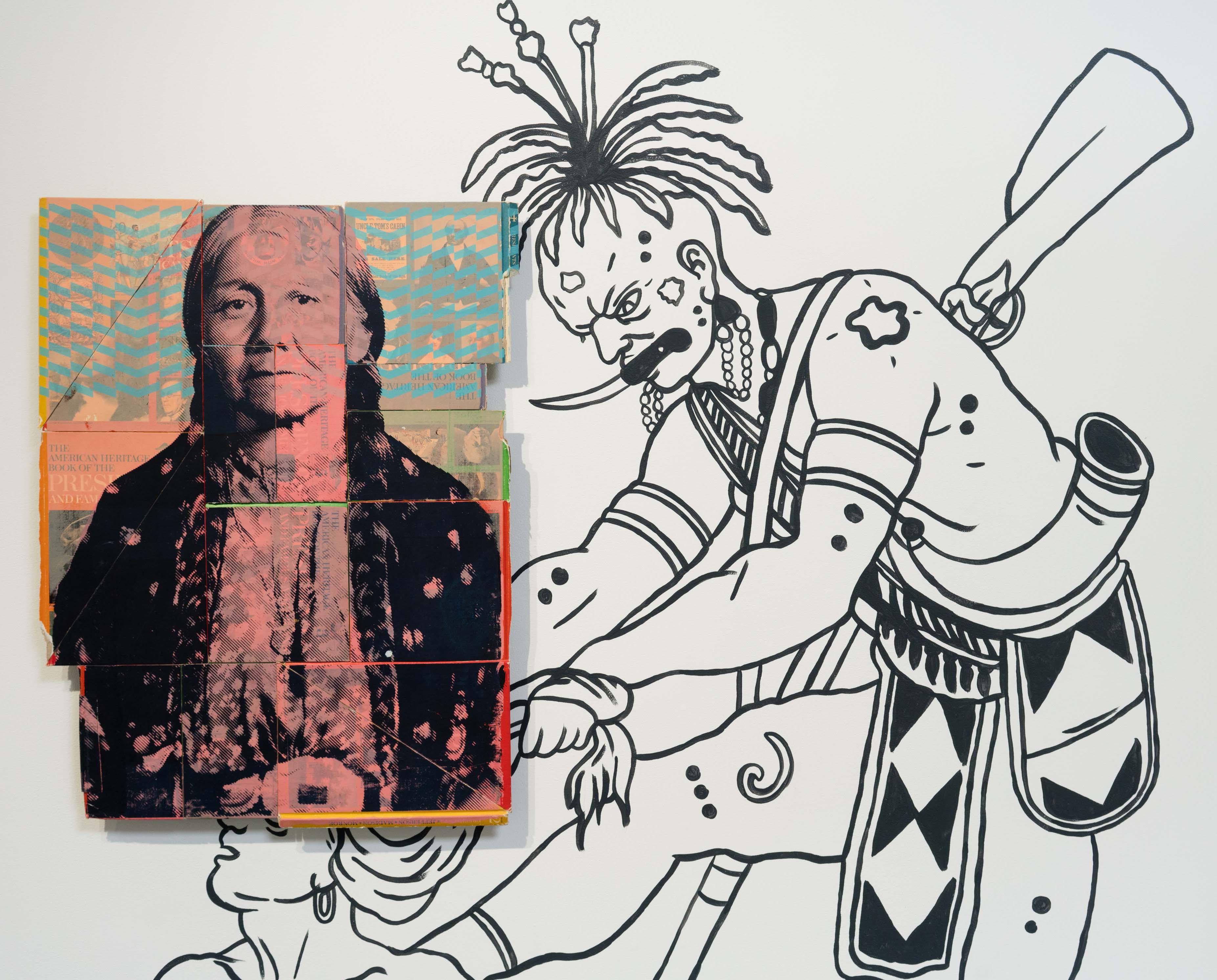A Native American Perspective: Interview with Keith Secola jr. | San Francisco, California
Join EAS writer Uji Venkat in conversation with Keith Secola, a recent graduate of the California College of the Arts MFA program. His father’s career, as a traveling artist, and his rich Native American background have created a direction for his art. Over years of living and breathing in the voices of artists around him, Keith began to see how he could create a platform to share his message as a Native American today.

After seeing his most recent exhibit at the Minnesota Street Project (MSP), and a previous exhibit at last year’s SOMArts show, I had the pleasure of talking to Keith about his journey and influences as an artist. Keith’s work at the MSP exhibition included black line drawings upon stark white walls--illustrating savage misrepresentations of Native Americans--juxtaposed with a vibrant archival collage of family photographs and printed book covers. Keith presents the audience with these stereotypical portrayals assumed by the Western world against his own experience and collection, “questioning the power of text, image, and persuasion.”

Keith's Artist Statement:
The work I produce focuses on both historical and contemporary aspects of Native American life in modern times gathered from the culture and traditions from my Northern Ute and Ojibwe tribal identity. I utilize archival family photographs and frequently gather imagery related to Native American life while listening to oral traditions that can provide stories and knowledge that I apply towards the content in my work. Currently I have screen-printed archival family photographs from my grandmother’s album on reclaimed book covers to reinsert the American Indian identity onto/into printed American propaganda. I rip, tear, and rupture the books and reassemble them to create my surface. So much information and history is lost, forgotten, stolen, or incorrect about the American Indian identity. The portraits fused with the book covers acts as a forgotten/lost narrative or history that can portray Native voices and bodies. This work began with the questioning of the power of text, image, and persuasion in combination and the results it has on indigenous people. In contrast to the Book pieces, I have inserted mythical, or the noble savage representations of Eastern Coastal Indians to compare two representations of native people. Attempting to create a dichotomy between them.
When did you realize you wanted to be an artist?
I believe it was a combination of things. My Dad is a contemporary Native American musician and growing up my family would sometimes travel with him exposing me to Native American artists around the country. I also love skateboarding and that has many connections to creative types and art. I was always just around it growing up and when I started to see the world through my own eyes being a visual artist was just natural for me to communicate.
How has the compilation of histories and misconceptions of Native American culture influenced your identity?
I come from a full blood Northern Ute family with strong connections to our tribe, but I also grew up outside of that community in urban environments as well. So there has always been a duality among my identity. When I’m outside of my community, even at a young age I would face racism and ignorance from non-native people. So finding a way to represent myself was always difficult. Speaking visually through art became a way for me to do this.
What sparked your interest in the reframing or exposure of Native American history through your art?

Having experienced that misconception and ignorance from non-native people all my life, it would consistently reinforce who I am as a Native American living today and that representation is important, because native people are either misrepresented or not represented at all. It became important to question this issue more in my work and projects.
Do you have a preferred medium (you have a wide range of printmaking, murals, installation and sculpture)? How do you choose your media?
I think naturally I always start with two-dimensional media. Painting and printmaking have always been my focus, but printmaking is so versatile that it can lend it self to bigger projects using installation and objects. So I like to start my initial experimenting usually with print media and from there it may grow beyond that.
What do you hope to leave the audience with as they experience your installation?
Well I hope that people would begin to question representation more seriously around the Native American experience. Question the powers of text, image, and the persuasions around what native people are. Hoping the audience would look past the certain clichés of what Native American art is, should be and how makes it.
This particular exhibit beautifully contrasts the black and white outlined representations with the pieced together colorful history of printed books and photographs. Are there artists whose style or mission inspires you?

There has always been graphic street art influence in my work through skateboarding and its rebellious qualities. As I’ve gotten older I’ve used those earlier influences compared with my art experience and research in other mediums. I think a lot of my dad’s music and creativity influenced me more than I think. A lot of what I owe belongs to having being raised with an indigenous perspective from my mother and looking up to those native artist before me. Artist most recently are people like Cannupa Luger (Mandan/Hidatsa), Jamison Banks (Seneca-Cayuga), and Wendy Redstar (Crow), and Native art collective PostCommodity. Other artist like Kara Walker, Hank Willis Thomas, and Guillermo Gomez-Pena.
What direction would you like to expand your work into next?
I would like to continue using my family’s photo archive along with other archival representation of my tribal background. Perhaps expand to larger installs including digital mediums. Further complicate the colonial perception of indigenous people in different art forms.
As an MFA student and artist who has exhibited work multiple times, what advice do you have for young artists all around the world?
Always get involved with your art community, show up for events, and just being present was an important lesson I learned. Don’t get discouraged when work is rejected or concepts aren’t realized. Try to learn from every experience and much of the art culture is based on relationships so treat people well too.
And what advice do you have for Emergent Art Space in its effort to foster understanding through art among artists from different countries and cultures?
Continue to give other indigenous artist a platform and voice that reaches a global scale. It would be cool to one day connect with other indigenous artists around the world for a project or show.